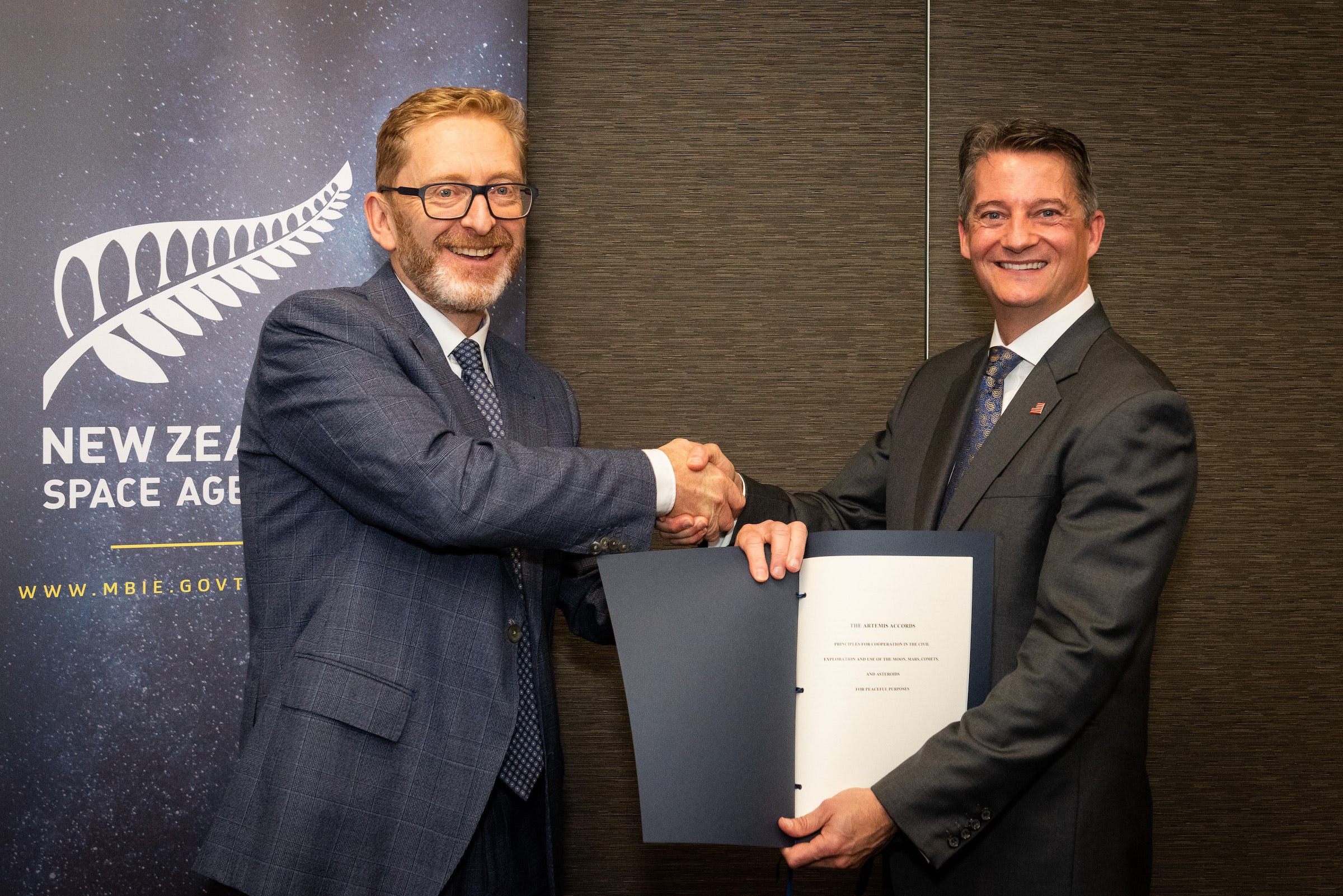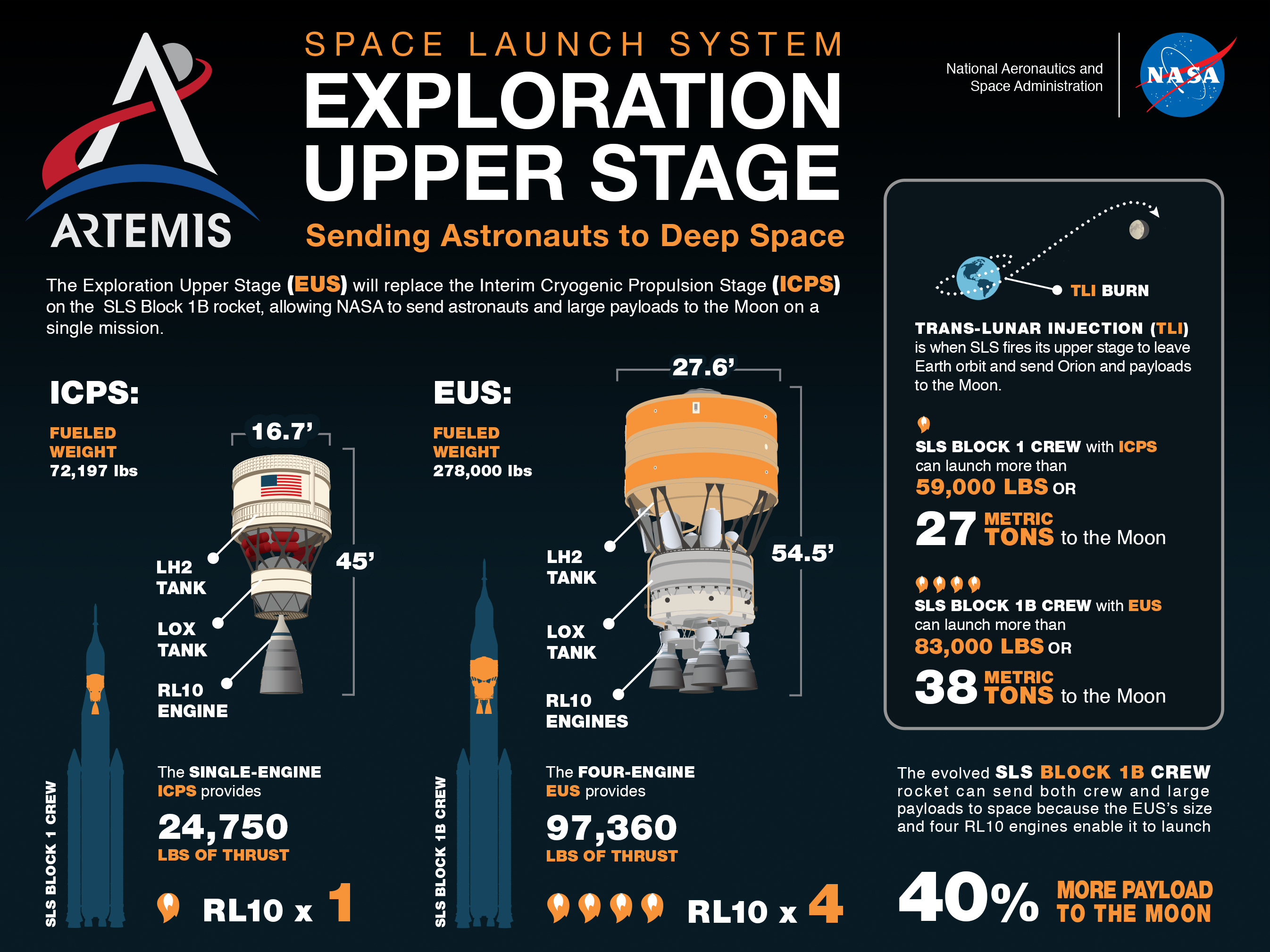Moon Monday Issue #30
New Zealand signs Artemis Accords, NASA begins stacking SLS for its 1st launch, Canada outs bid requests for its Moon rover, favorable water-rich sites on the lunar poles, and more lunar developments.
Highlight
On May 31, New Zealand signed the U.S.-led Artemis Accords, becoming the 11th such nation to agree on a consensus of best practices (per signees) to explore the Moon and outer space. New Zealand had provided input when the Accords were being drafted, and has now joined it with a particular interest in shaping sustainable use of space resources, SpaceNews reports.

Meanwhile, Russia and China invited several international entities last week, including the European Space Agency, to join their International Scientific Lunar Station project, a long-term science base at the Moon’s south pole. They expect initial responses at the Global Space Exploration Conference (GLEX) being held next week in Russia, where both countries will be presenting the project’s roadmap.
Related: A nice perspective piece by retired Indian Air Force officer Ajay Lele laying out the geopolitical reasons for why India should join China and Russia’s Moon exploration plans. In my opinion, we should also consider the factors of technological incentives such as India’s notorious drive to develop indigenous technologies, recent history such as how Indian-Russian cooperation for Chandrayaan 2 didn’t work out, and the few but important India-U.S. collaborations like Chandrayaan 1 and NISAR, or the upcoming Indian-Japanese joint Moon mission LUPEX. I intend to write my take on if India should join the Artemis Accords or the Chinese-Russian lunar station, or continue solo, but will likely do so after ISRO clarifies plans for the 2022 Chandrayaan 3 mission, and hopefully reveals any substantial details about their planetary exploration plans for the decade.
Exploration
NASA has stacked the twin solid rocket boosters of the SLS rocket on the vehicle’s mobile launcher at the agency’s Kennedy Space Center in Florida. Next up is the core stage, to be placed between the solid boosters, as NASA continues to target launching the Artemis I mission to orbit the Moon before end of year. In related news, per last week’s U.S. Presidential budget request for the fiscal year 2022 (Section: Crew Vehicle Development, DEXP-8), some non-critical components from the Artemis I Orion spacecraft will be reused, after refurbishing, in Artemis II’s Orion module. NASA says this cost-saving measure is key to the 2020 contract for producing Orion modules for missions Artemis III-V for a total cost of $2.7 billion, and an upcoming 2022 contract for Artemis VI-VIII at a total of $1.9 billion.
The SLS rocket’s Exploration Upper Stage (EUS) upgrade, to be used starting with Artemis IV, has been embraced by the FY 2022 U.S. Presidential budget request (Section: Launch Vehicle Development, DEXP-26), a stark contrast to the Trump administration budget requests that argued against EUS's need for near-term Artemis goals. With EUS, the SLS rocket’s Block 1B configuration will be able to deliver about 37,000 kilograms of payloads to Trans-Lunar Injection (TLI), including the 27,000-kilogram Orion spacecraft and 10,000 kilograms of additional payloads. NASA plans to start manufacturing the first EUS in 2022.

The Moon Village Association is inviting institutions worldwide, especially from developing countries, to help build their first lunar payload—a camera to be sent aboard an as-yet-undecided Moon lander within the next 2 years. The camera, which will capture Earth’s views as well as scientific lunar images, is also intended to host a radiation sensor.
Just a week after announcing plans to send a rover to the Moon by 2025, the Canadian Space Agency (CSA) has released a request for proposals asking Canadian companies to bid by July 12 for an eventual contract to make the rover. For this initial bid, CSA will award contracts to 2 companies, each getting no more than (USD) $1.5 million to conduct an 8-month study, which includes a detailed design proposal of the rover and its instruments, and laying out mission requirements. CSA will then select one of the two companies to build the rover.
ESA and the Luxembourg-based European Space Resources Innovation Center have launched a Space Resources Challenge, inviting European industries and institutions to propose innovative methods to prospect resources on the Moon’s poles. They will award 5 winners a €75K contract to develop their prototypes and compete in lunar analogue terrain to validate their proposals.
Science
Scientists have made a database of 169 water-ice bearing permanently shadowed regions on the Moon, using data from the Indian Chandrayaan 1’s Moon Mineralogy Mapper instrument provided by NASA, which discovered lunar water. The database includes information about the number of water ice detections within those permanently shadowed regions, and its abundance both on the surface and to the detection-limit depth below it. In the paper, the scientists then filter these sites for maximizing science while minimizing engineering hurdles such as traverse distance or steep slopes. They find that 11 sites can be explored by near future robotic missions to fulfill multiple major scientific objectives with relative ease. Notably, they also find that being able to traverse slopes greater than 20° provides diminishing returns.

In a new paper, scientists say that the longest sinuous rille (a narrow lava channel) on the Moon is actually made up of two rilles, a finding that has implications for interpreting Chang’e 5 Moon samples. The authors say that the 320 km-long Rima Sharp formed first, and the connected 150 km-long Rima Mairan formed later. Both cross the middle of the Chang’e 5 landing site containing (geologically) young volcanic deposits. The authors conclude that Chang’e 5 samples have material dominated from eruptions that carved Rima Sharp as opposed to Rima Mairan.
In a whitepaper submitted to the Decadal Survey of 2023-2032—a report produced every 10 years by the U.S. scientific community to guide future NASA missions—a group of scientists, engineers, and entrepreneurs argue how long-term human and robotic exploration of the Moon will move humanity into the Solar System with a logical, sustainable, and science-based approach. It’s a great overview of the several sweeping advantages of investing in sustained Moon exploration.
Thank you Dr. Gordon Roesler, planetary scientist David Blewett, and RBK for supporting me and powering this edition of Moon Monday.
Everyone, I’m publishing this one-of-a-kind Moon exploration newsletter for free, with no ads. And it will stay that way. If you like my work, support me to keep it going.
